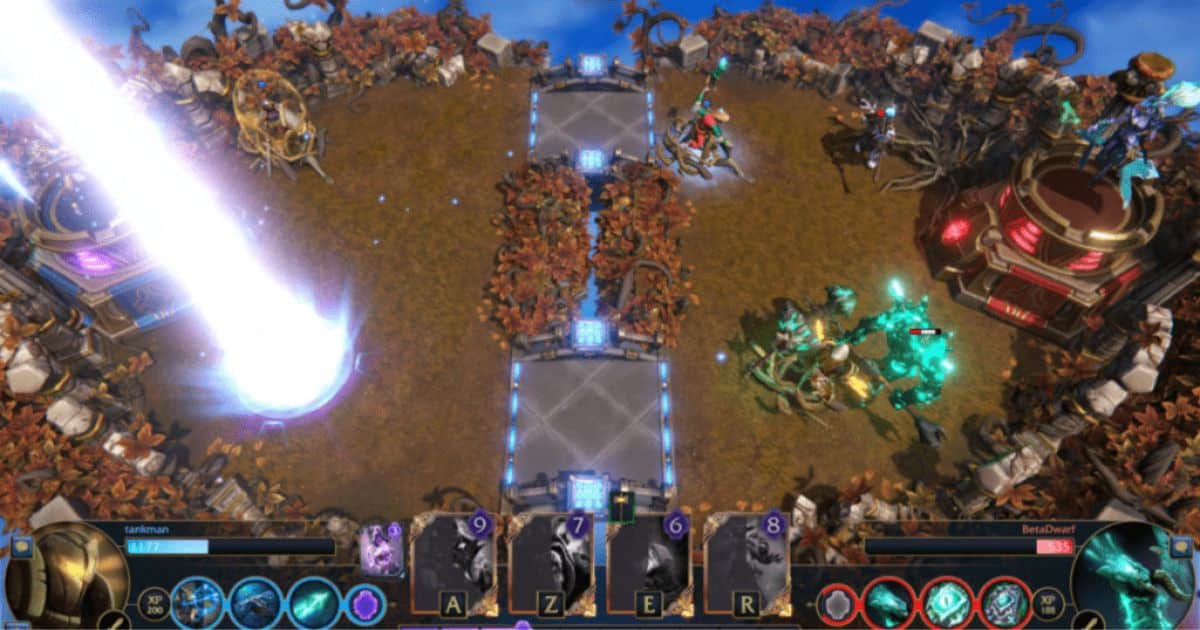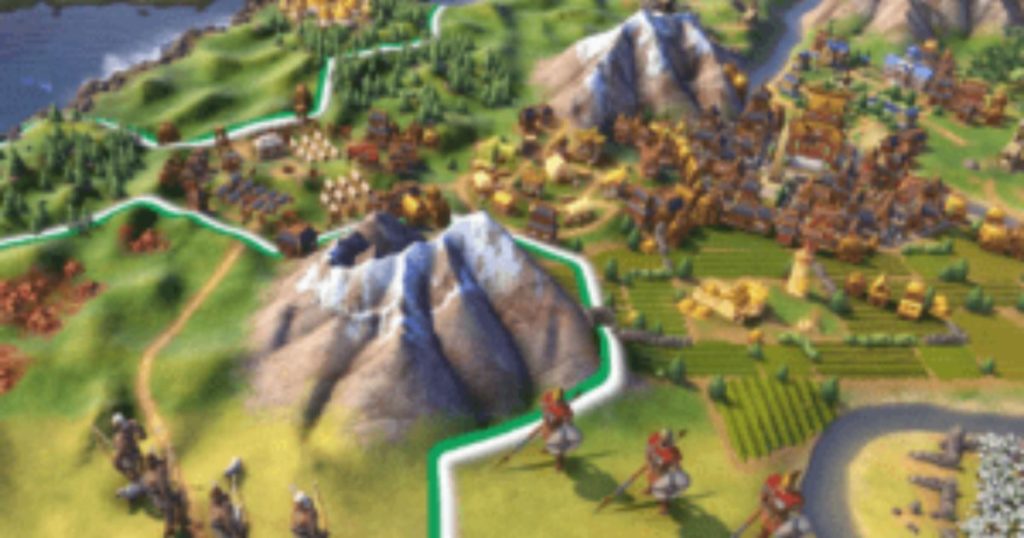RTS stands for Real-Time Strategy. The real-time aspect of RTS games means that everything happens in real-time. It means that players must make decisions without having the ability to pause the game or take their time. Unlike turn-based strategy games, players take turns making moves. In RTS games, all players make moves and decisions. The game continues regardless of whether any player is ready.
Have you ever wondered what Does RTS stand for in gaming? So, you’re not alone! RTS stands for “Real-Time Strategy.” It involves making quick decisions and building an army to gain strategic power. With so much going on, RTS games provide an adrenaline-pumping and rewarding experience that few other genres can match. This article will discuss RTS games’ history, work, and some of the most popular games ever created.
Real-time strategy games have been popular in the gaming world for decades. Players of RTS games experience complexity, strategy, and fast-paced action. For those unfamiliar with the term, RTS stands for Real-Time Strategy.
What Are RTS Games?

RTS games are set in various contexts, from fantasy to sci-fi to historical. Players must build and manage their base, gather resources, and create an army to defeat opponents. RTS games are usually played in multiplayer mode. Players compete against each other. Each player begins with limited resources. As the game progresses, they must gather more resources.
In an RTS game, players must manage their resources, as every action requires a certain amount. They must balance their economy and army. They must decide when to invest in building new structures or units. They must also choose when to focus on gathering more resources. Players must also micromanage their army, deciding which units to produce, where to send them, and when to attack or defend.
RTS games have come a long way since their early days. With the rise of esports, RTS games have become competitive. Players are honing their skills to compete at the highest levels. Popular RTS games have dedicated communities and tournaments with large prize pools. Examples include Starcraft II, Age of Empires II, and Warcraft III.
The History of RTS Games
RTS games have a long and storied history, dating back to the early days of gaming. The first real-time strategy game was Dune II, released in 1992 by Westwood Studios. The game was set in the Dune universe. Players could take control of one of three factions and battle for control of the planet Arrakis. Dune II was a groundbreaking game.
It introduced many gameplay mechanics. These mechanics are now standard in the RTS genre. Following the success of Dune II, other companies began to release their own RTS games. One of the most popular was Command & Conquer, also developed by Westwood Studios and released in 1995. Command & Conquer was set in a near-future world.
Players could control one of two factions, the Global Defense Initiative (GDI) or the Brotherhood of Nod. The game was a massive hit. It spawned several sequels, including Command & Conquer: Red Alert and Command & Conquer: Tiberian Sun.
Evolution of the RTS genre
The RTS genre grew popular in the late 1990s and early 2000s, with many companies releasing their RTS games. Blizzard Entertainment released Warcraft: Orcs & Humans, its first RTS game, in 1994. It is famous for popular games like World of Warcraft and Diablo.
The game was a massive hit. It spawned several sequels, including Command & Conquer: Red Alert and Command & Conquer: Tiberian Sun. Warcraft III was influential in the RTS genre. It introduced hero units and the ability to level up and customize units.
Impact of RTS Games on the Gaming Industry

Another popular RTS game from this era was Age of Empires, released by Microsoft Studios in 1997. Age of Empires was set in various historical periods, from ancient Greece to the Middle Ages. The game allowed players to choose their path to victory. It could be through military conquest, economic domination, or technological advancement.
In the 2000s, the RTS genre continued to evolve. Relic Entertainment released Company of Heroes in 2006. It introduced new gameplay mechanics, such as cover and suppression. It added an extra strategy layer to battles. Blizzard Entertainment released Starcraft II in 2010. It has become one of the most popular esports games in the world.
How Do RTS Games Work?
RTS games need players to multitask and make quick decisions in real time. Players must manage their economy, build their base, and create an army to defeat opponents. Each game begins with limited resources. Players must gather more resources to build new structures and units.
Resource management is critical in RTS games. Players must decide when to invest in new structures or units and when to gather more resources. They must balance their economy with their military. They must also micromanage their army, deciding which units to produce, where to send them, and when to attack or defend.
Strategy and tactics help players win and lose battles in RTS games. Players must scout, plan, and use abilities to gain an advantage. Different units have different strengths and weaknesses. Players must use them to counter their opponents’ teams.
RTS games are usually played in multiplayer mode, where players compete against each other. Matches can last from a few minutes to several hours. It depends on the game’s complexity and the players’ skill.
Popular RTS Games
There have been many popular RTS games, each with unique gameplay mechanics and settings. Here are some of the most popular RTS games ever created:
· Starcraft II: Developed by Blizzard Entertainment and released in 2010, Starcraft II is one of the most popular esports games in the world. Set in a Sci-fi universe, the game allows players to control one of three factions and battle for control of the galaxy.
· Age of Empires II: Released by Microsoft Studios in 1999, Age of Empires II is a classic RTS game set in the Middle Ages. The game allows players to choose from various civilizations and build their empires.
· Command & Conquer: Developed by Westwood Studios and released in 1995, Command & Conquer is set in a near-future world. It allows players to control one of two factions. The Global Defense Initiative or the Brotherhood of Nod.
· Warcraft III: Blizzard Entertainment released Warcraft III in 2002. It is set in the Warcraft universe and includes hero units and the ability to level up and customize units.
FAQs:
What does RTS stand for in gaming?
RTS stands for “Real-Time Strategy.”
What are some examples of RTS games?
Popular RTS games include Age of Empires, Starcraft, Command & Conquer, and Warcraft.
What is the purpose of an RTS game?
The goal of an RTS game can vary but involves defeating enemy forces, building a prosperous economy, or completing particular objectives.
Are RTS games popular?
RTS games have a dedicated fan base and have been popular for many years.
Are there any professional esports players who specialize in RTS games?
Yes, professional esports players specialize in playing RTS games.
Conclusion:
In conclusion, what does RTS stand for in gaming? RTS games are a popular genre. Players must multitask, micromanage, and plan in real time. RTS games are set in various contexts, from fantasy to sci-fi to historical. Players must construct and oversee their economy.
They must also assemble an army and battle with other players to succeed. They must manage their resources and make swift and strategic decisions. Some of the most popular RTS games of all time include Starcraft II, Age of Empires II, Command & Conquer, and Warcraft III. These games have influenced the genre and set the standard for other RTS games.
As technology advances, the RTS genre will continue to evolve. New gameplay mechanics and better graphics will make RTS games more engaging. Improved AI will further enhance the experience. They will also make them more challenging than ever before.

Brook over 3 years of professional gaming, esports coaching, and gaming hardware reviews to provide insightful expertise across PC, console, and mobile gaming.










